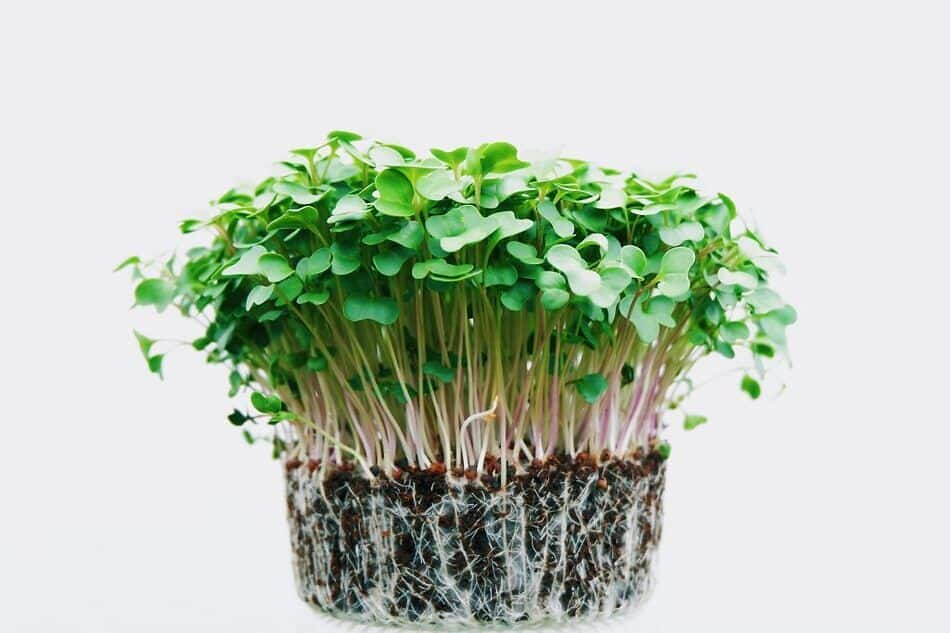Some of you may or may not have heard about Quinoas or more precisely, the Quinoa rice and its countless health benefits. If not, then you’re in luck, because in this article, I’ll be talking about Quinoa microgreens, how to grow quinoa microgreens, the benefits of quinoa microgreens, and much more. And most importantly, what foods can you make with the quinoa microgreen and more.

How To Grow Quinoa Microgreens
If you’re looking for a nutrient-packed punch in a small package, look no further than quinoa microgreens. These tiny greens pack a big nutritional punch, and they’re easy to grow at home. Quinoa microgreens are a great source of vitamins A, C, and E, as well as iron and calcium. They’re also high in fiber and protein.
To grow quinoa microgreens, start with a seed mix that includes quinoa seeds. You can find these mixes at your local nursery or online. Sow the seeds thinly on a tray of moistened potting mix, and cover with another layer of mix. Place the tray in a warm, sunny spot, and water regularly to keep the mix moist. In about 10 days, you’ll have a tray full of healthy microgreens that are ready to eat!
I have talked about how to grow quinoa microgreens, rather very succinctly, let me guide you on how to grow quinoa microgreens in more detail now.
How To Grow Quinoa Microgreens
Step-wise Process
Microgreens are a type of vegetable that is harvested when the plant is still young. They are typically less than two inches tall and are packed with nutrients. Quinoa microgreens are a great option for those looking for a nutrient-rich, leafy green.
Here is a step-by-step guide to growing quinoa microgreens:
1. Soak quinoa seeds in water overnight. This will help to soften the hard outer shell and encourage germination.
2. Drain the seeds and rinse them well.
3. Spread the seeds evenly on a moistened paper towel or grow mat. Be sure to leave some space between each seed.
4. Cover the seeds with another damp paper towel or grow mat. This will help to create a humid environment for germination.
5. Place the tray in a warm, dark place and check on it daily. After about 3-5 days, you should see the seeds sprouting.
6. Once the sprouts are about an inch tall, they are ready to be transplanted into soil. Fill a shallow container with potting mix and transplant the sprouts, being sure to space them out evenly.
7. Keep the soil moist but not soggy and place the container in a sunny spot. In about 10 days, your quinoa microgreens will be ready to harvest!
8. To harvest, simply cut the greens at the base of the plant with a sharp knife or pair of scissors.
9. Enjoy your homegrown quinoa microgreens as-is or use them to top off salads, soups, or wraps!
Now that I’ve taught you how to grow quinoa microgreens, let’s talk about the benefits of eating quinoa microgreens.
Before I move on to the benefits of eating quinoa microgreen, let me tell all those newbies what the quinoa microgreen is.

What Is The Quinoa Microgreen
Quinoa is a grain crop that is grown for its edible seeds. The quinoa microgreen is the sprout of this grain crop, and it is becoming increasingly popular as a source of nutrients and antioxidants.
These microgreens are typically harvested 7-10 days after planting when they are 1-2 inches tall. Quinoa microgreens are a rich source of vitamins A, C, and E, as well as magnesium, phosphorus, and iron. They also contain high levels of chlorophyll, which has been shown to have health benefits such as detoxifying the body and boosting the immune system.
In addition to their nutritional value, quinoa microgreens have a mild, nutty flavor that makes them a versatile ingredient in salads, soups, and wraps.
Is Quinoa And The Quinoa Microgreen The Same?
Quinoa and quinoa microgreens are actually two different things. Quinoa is a seed that is often ground into flour or used as a grain, while quinoa microgreens are the sprouted version of the quinoa plant.
Both quinoa and quinoa microgreens are sources of nutrients like protein and fiber, but quinoa microgreens are more concentrated in these nutrients since they are younger plants. Because of this, quinoa microgreens are often touted as being healthier than their full-grown counterparts.
However, both quinoa and quinoa microgreens make for a healthy addition to your diet.
Health Benefits Of Quinoa Microgreens
Microgreens are young greens that are harvested when they are about 1-3 inches tall. They are typically grown from the seeds of vegetables and herbs, and many people believe that they contain more nutrients than full-grown greens.
Quinoa microgreens are a type of microgreen that is made from the seeds of the quinoa plant. Quinoa is a grain crop that is native to South America, and it is a staple food in many cultures. Quinoa microgreens are a rich source of vitamins, minerals, and antioxidants. They also contain high levels of protein and fiber. Furthermore, quinoa microgreens have been shown to boost heart health, improve digestion, and reduce inflammation. All of these health benefits make quinoa microgreens an excellent addition to any diet.
Conclusion
To conclude everything, to grow quinoa microgreens, you will need to start with a pot or container that is at least 6 inches deep and has drainage holes. Fill the pot with a quality potting mix, then wet the mix thoroughly. Next, sow the quinoa seeds evenly over the surface of the mix. Cover the seeds with another layer of moist potting mix, then place the pot in a warm, sunny spot. Keep the soil moist, but not soggy, and within 7-10 days, the quinoa microgreens will begin to sprout.
When they are 2-3 inches tall, they are ready to harvest. To do so, simply snip them off at the base with a sharp knife or scissors. Quinoa microgreens are best enjoyed fresh, but can also be stored in a covered container in the refrigerator for up to a week.
I hope now you know how to grow quinoa microgreens and will be able to grow them yourselves.
